DIY THC Cannabis Oil: A Complete Guide
Cannabis oil is becoming more popular for its health benefits. It can help with pain, mood, and heart health. In this guide, we’ll show you how to make your own THC cannabis oil at home.
The entourage effect makes cannabis oil very potent. It happens when all cannabinoids work together. This includes THC, CBN, and more. Studies also show edibles can be up to five times stronger than smoking.
We’ll talk about picking the right cannabis and oil. We’ll also cover decarboxylation and infusion. Whether you’re new or experienced, you’ll learn how to make your own cannabis oil. Let’s start our journey into DIY THC cannabis oil!
Understanding Cannabis Oil Basics
Cannabis oil comes from the cannabis plant. It has many cannabinoids, terpenes, and other good stuff. These oils can help with pain, sleep, and more, based on their makeup.
Benefits and Uses of Cannabis Oil
Full-spectrum cannabis oils are special. They use the entourage effect. This means all the cannabis compounds work together. It makes the oil more effective than just one compound.
Different Types of Cannabis Oil
- CBD-only Oils: These oils come from hemp. They have very little THC, the part that gets you high.
- THC-dominant Oils: These oils are made from cannabis with lots of THC. They’re used for feeling high.
- Balanced Ratio Oils: These oils mix THC and CBD well. They aim to give the best of both worlds.
Medical vs Recreational Applications
Medical cannabis oil helps with pain, anxiety, and sleep issues. But, oils with more THC are for fun. They make you feel happy and relaxed.
Essential Equipment and Ingredients
Making top-notch cannabis oil needs the right tools and ingredients. First, you’ll need a few key items:
- A rimmed baking tray
- Baking paper
- A crockpot or double boiler
- Cheesecloth or a fine-mesh strainer
- Cooking twine
For the infusion ingredients, you’ll need 3.5-7 grams of cannabis flower and about 1/2 cup of cooking oil. Coconut or olive oil works well. A thermometer is also handy for keeping an eye on the temperature.
Getting the temperature right is key when making cannabis oil. First, bake the cannabis at 245°F (120°C) for 30-40 minutes. This step activates the THC and CBD. Then, simmer the oil at 160-200°F (70-93°C) for 2-3 hours.
“Maintaining the right temperatures is key to preserving the potency and purity of the final cannabis oil product.”
When working with cannabis oil equipment and infusion ingredients, safety is crucial. Make sure you have good ventilation to avoid flammable fumes. Always wear protective gear when handling hot equipment.
With the right cannabis oil equipment and infusion ingredients, you’re ready to make your own cannabis oil at home. It’s safe, potent, and of high quality.
Choosing the Right Cannabis Strain and Carrier Oil
When making your own cannabis oil, picking the right strain and carrier oil is key. Choose fragrant cannabis types with good terpene profiles for better flavour and smell. Popular strains for oil making include Granddaddy Purple, Northern Lights, and Trainwreck. They all have a rich, complex scent.
Best Cannabis Strains for Oil Production
- Granddaddy Purple: A classic indica-dominant strain known for its calming effects and grape-like aroma.
- Northern Lights: A potent indica strain boasting notes of pine, citrus, and spice.
- Trainwreck: A sativa-dominant hybrid with a pungent, earthy scent and uplifting cerebral effects.
Optimal Carrier Oils for Infusion
For carrier oils, choose high-fat ones like olive oil, coconut oil, and avocado oil. These oils bind well with THC and CBD, making your infusion strong and tasty. Olive oil is great because it’s also good for your health, thanks to its antioxidants and anti-inflammatory properties.
Understanding THC Potency Levels
The THC level in your cannabis oil depends on the strain. THC levels usually range from 20% to 35% THCA. Some strains can have even more THC. Knowing the THC level is important for safe and enjoyable use.
“Selecting the right cannabis strain and carrier oil is essential for crafting a high-quality, potent cannabis oil.”
The Decarboxylation Process Explained
Decarboxylation is key in making cannabis’s main cannabinoids, like THC and CBD, active. It involves heating cannabis to certain temperatures. This changes the inactive forms (THCA and CBDA) into the active ones (THC and CBD).
Studies show that THCA needs about 220°F (105°C) for 30 to 45 minutes to decarboxylate. CBD-rich strains start decarboxylating at 245°F (118°C) and take up to 90 minutes. The best temperatures for THC activation are between 252 to 293°F (122 to 145°C) for 7 to 30 minutes.
Un-decarboxylated THCA still has health benefits like being anti-inflammatory and neuroprotective. Raw CBDA also has benefits like anti-anxiety and anti-inflammatory effects. But, decarboxylation is needed to turn these acids into their active, psychoactive forms.
“Decarboxylation is the process through which THCA converts to THC, which is essential for feeling the intoxicating effects of THC in cannabis products.”
Proper decarboxylation is vital for consistent potency and effects in cannabis products, especially edibles. Standardised decarboxylation protocols help manufacturers control the cannabinoid profile. This ensures their products meet consumer expectations.
New technology has made controlling decarboxylation more precise. This improves efficiency and product quality. Decarboxylating cannabinoids before extraction can also boost extraction efficiency, depending on the solvent used.
The decarboxylation process is crucial in cannabis extraction and product making. It offers benefits like better extraction efficiency, enhanced binding affinity, and more consistent products.
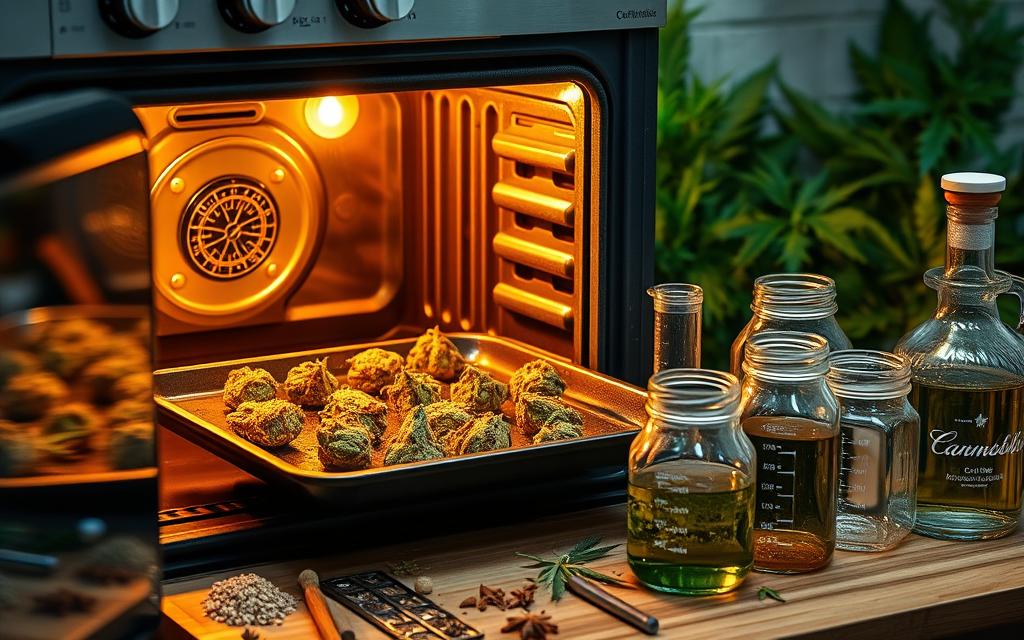
How to Make THC Cannabis Oil
Making your own cannabis oil at home is rewarding. It lets you control the quality and strength of the oil. First, you need to decarboxylate the cannabis. Then, mix it with a carrier oil like coconut or olive oil.
Keeping the right temperature and infusion time is key. This way, you get the most THC for a strong and effective oil.
Step-by-Step Preparation Guide
- Begin with high-quality, decarboxylated cannabis flower. This step makes the THC active for infusion.
- Choose a good carrier oil, like coconut or olive oil. They’re great for extracting and keeping cannabinoids.
- Mix the decarbed cannabis and carrier oil in a double boiler or slow cooker. Keep the temperature between 120-180°F (49-82°C).
- Infuse for 2-4 hours, stirring now and then to avoid burning or overheating.
- Strain the oil through a fine-mesh sieve or cheesecloth to remove plant matter.
- Put the strained oil in an airtight container. Store it in a cool, dark place to keep it potent and fresh.
Temperature Control Tips
Keeping the right temperature is vital for a good infusion. Too low, and you might not get all the cannabinoids. Too high, and they can break down. Aim for 160-180°F (71-82°C).
Infusion Timing Guidelines
The infusion time affects the oil’s strength and quality. Longer times, like 2-4 hours, help extract more cannabinoids. But don’t go over 4 hours, as too much heat can damage the THC and other compounds.
| Carrier Oil | Popularity | THC/CBD Content | Benefits |
|---|---|---|---|
| Coconut Oil | High | Both THC and CBD | High in fatty acids, absorbs cannabinoids well |
| Olive Oil | High | Both THC and CBD | Antioxidant properties, absorbs cannabinoids well |
| Hemp Seed Oil | Medium | CBD-only | Nutritious, legal in most regions |
Straining and Storage Methods
After infusing your cannabis oil, it’s time to strain and store it right. Filtering and storing well are key to keeping your oil’s quality and strength.
Straining the Cannabis Oil
To strain your infused cannabis oil, use a cheesecloth or a fine-mesh strainer. Pour the oil through it slowly, making sure all plant bits are caught. Do this twice for the best results, aiming for a clear, pure oil.
Storing the Cannabis Oil
Once strained, put your cannabis oil in an airtight glass container. Keep it in a cool, dark spot, like a cupboard or fridge. Stored right, your cannabis oil can last up to six months, letting you enjoy its benefits longer.
| Filtration Method | Recommended Straining | Estimated Shelf Life |
|---|---|---|
| Cheesecloth | Repeat twice | Up to 6 months |
| Fine-mesh Strainer | Repeat twice | Up to 6 months |
By following these steps, you can keep your cannabis oil filtration and storing cannabis oil top-notch. This ensures your homemade cannabis oil stays quality and potent.
“Proper filtration and storage are the keys to maintaining the integrity of your cannabis oil.”
Proper Dosing Guidelines
Finding the right amount of cannabis oil is key. It helps you get the effects you want without problems. Start with small amounts and slowly increase them as needed.
Calculating THC Content
Knowing how much THC is in your oil is vital. A 15 mg/g THC oil bottle has about 13.95 mg THC per milliliter. This info helps you figure out how much THC you’re getting in each dose.
Recommended Starting Doses
- Mark Kasabuski says most people feel effects at 2.5 to 5 milligrams.
- For oils with more THC, start with small amounts.
- Wait two hours before taking more to avoid bad reactions.
Think about your tolerance, weight, and what you want to feel when picking a dose. Also, be careful if you’re taking other medicines, as they might interact.
Getting the right dose of cannabis oil can take some trial and error. Keep an eye on how your body reacts and adjust as needed. This way, you can enjoy the benefits without the downsides.
Quality Control and Testing
In the cannabis world, quality control and testing are key to keeping consumers safe and products reliable. Advanced testing methods like HPLC-UV and GC-MS measure potency and purity accurately. They go beyond simple tests like the “finger test” for resin.
With stricter rules, cannabis makers must follow the latest testing rules closely. States often change their rules on contaminant testing. This shows the industry’s growing awareness of risks. For example, new rules now check for aspergillus and minor cannabinoids like CBG and CBN.
The push for standardisation is clear, with groups like ASTM International working on common testing rules. This effort aims to make trade easier and better for everyone involved.
| Testing Requirement | Importance |
|---|---|
| Potency Testing | Mandatory in all states to ensure consumers can manage the effects of any product they consume. |
| Contaminant Testing | Continuously updated to address industry risks and protect consumer safety. |
| Terpene Profiling | Allows consumers to choose products based on desired flavour profiles and potential synergies between cannabinoids and terpenes. |
As the cannabis industry grows, quality control and testing are more important than ever. By using the latest analytical methods and keeping up with rules, producers can ensure their products are safe and consistent. This builds trust and loyalty with their customers.

Common Mistakes to Avoid
Making premium cannabis oil at home can be rewarding. But, it’s important to avoid common mistakes. These include temperature control issues, storage problems, and dosing errors. Knowing these pitfalls helps ensure a good infusion and a safe, enjoyable experience.
Temperature Control Challenges
Keeping the right temperature is key when making cannabis oil. If the oil gets too hot, it can lose its quality and potency. The best temperature for THC activation is around 240°F, which takes about 45 minutes to an hour.
Rushing this step or using too high a temperature can ruin the oil. This means it won’t have the desired effects.
Storage Concerns
Storing cannabis oil properly is vital. Light, air, and heat can damage the active compounds. Store your oil in dark glass or opaque containers in a cool, dark place.
Ignoring these storage tips can reduce the oil’s potency and quality over time.
Dosing Errors
Dosing cannabis oil correctly is tricky. The effects can be much stronger than smoking or vaping the same amount. Mistake 3: Using Too Much Cannabis when Cooking can lead to an overwhelming experience. Edibles can be up to five times stronger than inhalation.
Start with small doses, like 1/4 to 1/2 teaspoon. Gradually increase as needed to avoid unwanted effects.
By avoiding these common mistakes and following best practices, you can make high-quality cannabis oil. This ensures a successful and enjoyable experience, tailored to your needs and preferences.
“The ideal ratio for making cannabis oil is 1 cup of oil to 1 cup of decarbed cannabis (approximately 7-10 grams).”
Conclusion
Making homemade cannabis oil lets you tailor the strength, type, and ingredients to fit your needs. It’s a cost-effective way to avoid commercial products. Whether you want THC’s effects or CBD’s benefits, you can control your cannabis use.
But, it’s key to check local laws on cannabis use and making it. In places where it’s legal, homemade cannabis oil can be a great addition to your health routine. By following best practices and keeping quality high, you can enjoy the benefits of DIY cannabis oil.
Deciding to make cannabis oil at home needs careful thought. You must consider the legal and safety sides. With the right approach, homemade cannabis oil can be a personal and empowering way to use cannabis for wellness.
FAQ
What are the benefits and uses of cannabis oil?
Cannabis oil helps with pain, boosts mood, and improves heart health. You can add it to food, apply it to the skin, or take it as a tincture.
What are the different types of cannabis oil?
There are CBD-only, THC-rich, and balanced oils. Full-spectrum oils have more benefits because of the entourage effect.
What is the difference between medical and recreational use of cannabis oil?
Medical use helps with pain and sleep. Recreational use is for the THC high.
What equipment and ingredients are needed to make cannabis oil at home?
You’ll need a baking tray, paper, crockpot, cheesecloth, and twine. Use 3.5-7 grams of cannabis and 1/2 cup of oil like coconut or olive.
How do I choose the right cannabis strain and carrier oil for making cannabis oil?
Pick strains with good terpenes for taste. Use olive, coconut, or avocado oil. Olive oil is good for health too.
What is the decarboxylation process and why is it important?
Decarboxylation turns THCA to THC and CBDA to CBD. Heat cannabis to 240°F (115°C) for 30-40 minutes. This makes the oil more potent.
How do I infuse the cannabis into the oil?
Mix decarboxylated cannabis with oil in a double boiler. Heat between 160-180°F (71-82°C) for 2-4 hours. Stir and watch the water level.
How do I strain and store the finished cannabis oil?
Strain the oil through cheesecloth or a fine mesh. Do this twice for the best result. Store in a dark, cool place for up to six months.
How do I properly dose cannabis oil?
Start with small doses and increase as needed. A teaspoon of 1:1 ratio oil has 3-5mg THC. Wait 30-60 minutes before feeling the effects.
How can I ensure the quality and potency of my homemade cannabis oil?
Use HPLC-UV, mass spectrometry, and GC-MS for accurate testing. These methods are better than the “finger test” for quality.
What are some common mistakes to avoid when making cannabis oil?
Don’t overheat the oil to avoid losing cannabinoids and terpenes. Store it properly and dose carefully. Edibles are stronger than smoking.
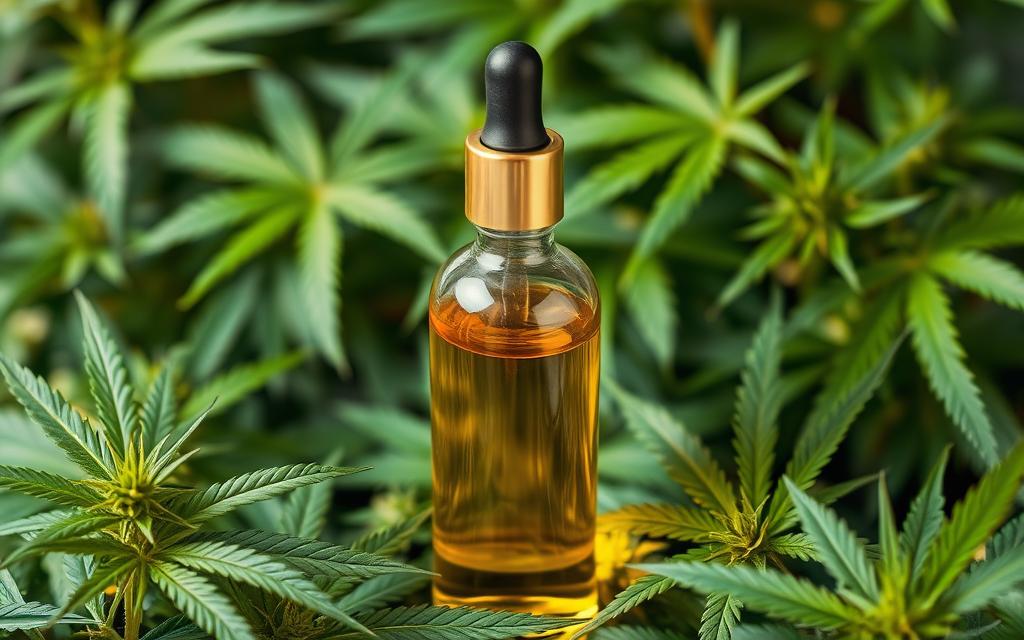




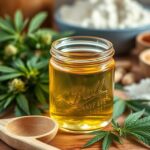


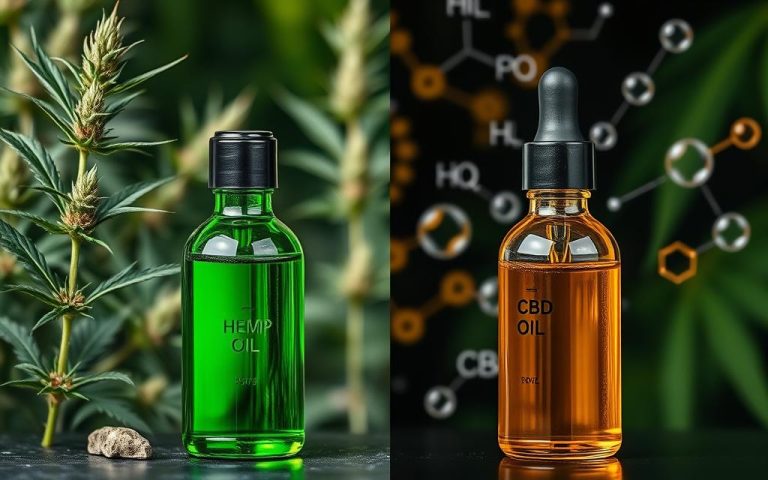
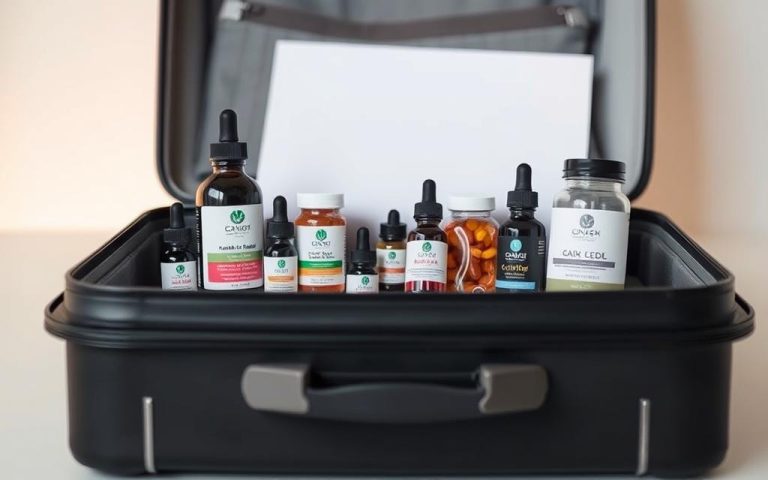
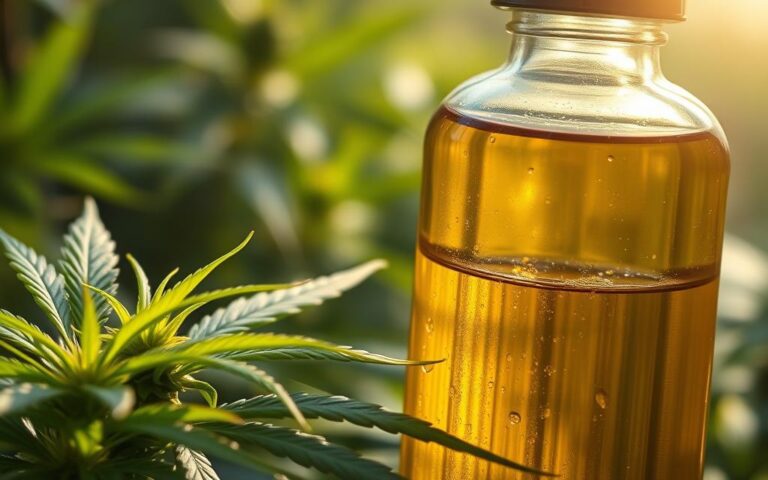
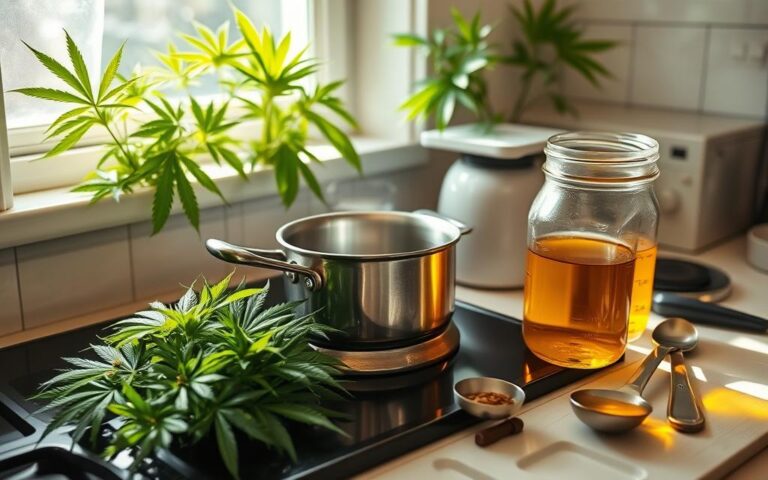
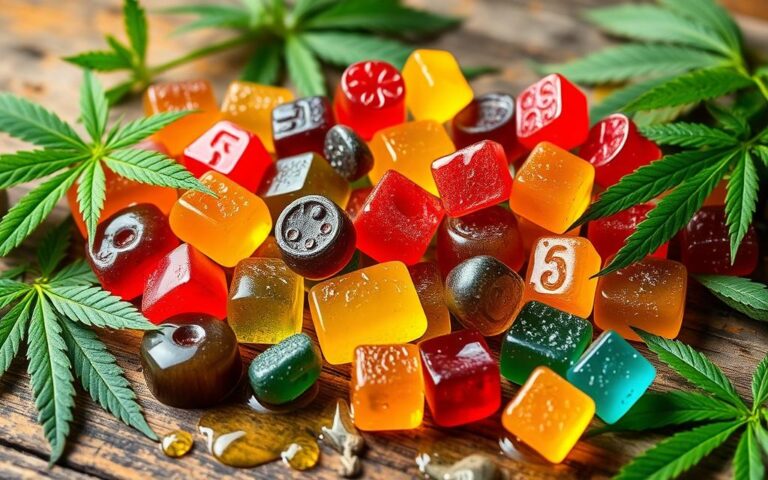
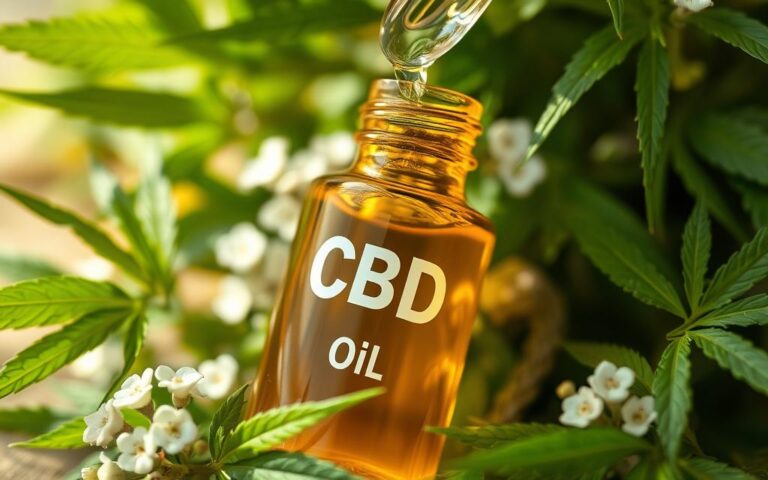
2 Comments